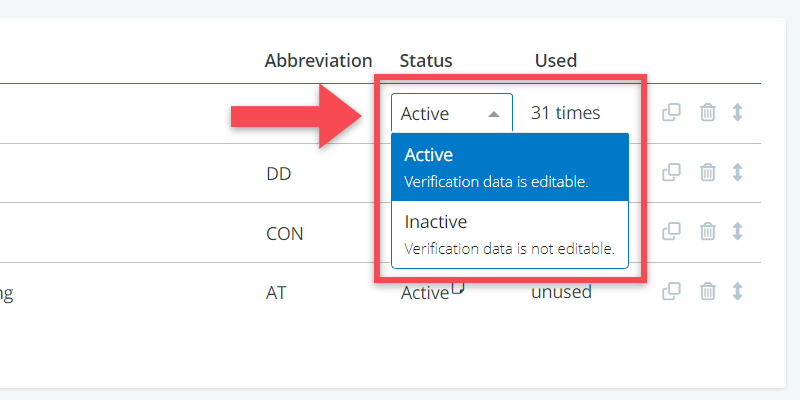The verification settings allow you to customize the verification set-up to the specifics of your project.
It allows you to define standard properties for:
- Verification plans (e.g., method)
- Verification results (e.g., outcome categories)
- Demonstration documents (e.g., format)
- Verification assessments (e.g. acceptance vs rejected)
With regard to the phasing of verifications, the settings menu enables you to:
- Define verification phases
- Active/de-activate verification phases
You can find the verification settings in the settings menu (the bottom part of the navigation menu). See image below. Please note: you will only see these settings if you have the appropriate permissions or role.

Each of the settings will be explained below.
Define standard properties
You can define standard properties for verification plans, verification results and demonstration documents. This is all done in the same way.
1. Go the verification settings for standard properties: Navigation menu > Settings > Verification > Standard properties.
2. Select the verification object (plan, result, assessment, or demonstration document) for which you want to define standard properties.
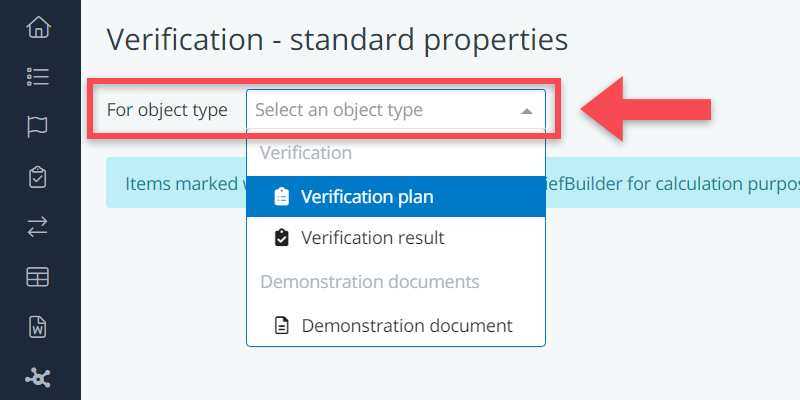
3. Add standard properties for this by clicking on Add standard property.
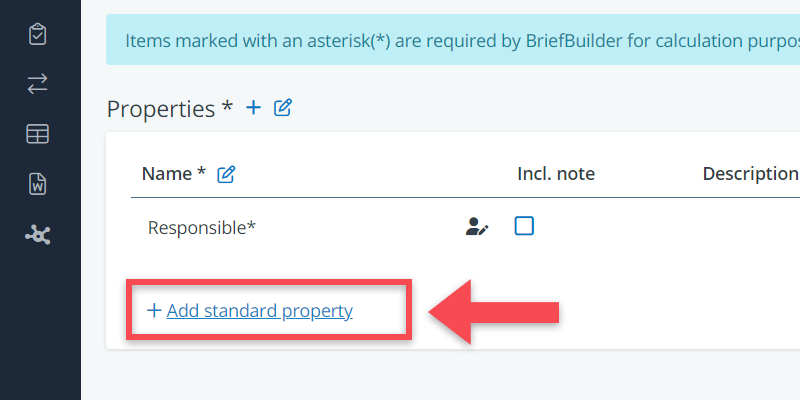
4. Define all the relevant property attributes in the table:
- Name: the property’s name (e.g., method).
- Incl. note: when checking this box, you allow users to add a note to the value of this property (e.g., some more explanation about the chosen method).
- Description: some explanation or a definition of the property (e.g., “the method that must be used to demonstrate compliance”).
- Input type: define what kinds values should be possible. For verification properties, it is usually the picklist that is relevant (e.g. when you want to define a list of methods) or the user/role /organisation option (when you want to create a property for assigning responsibilities, for example in relation to approvals).
- Icon: the icon that will be used to visualise this property on the detail view.
- Picklist values: the relevant value options (e.g., different kinds of methods). Only relevant when you have chosen picklist as input type earlier.
5. Note the action buttons at the end of the table:
- By clicking on the , you can delete a property.
- By clicking on the , you move a property up or down in the sequence.
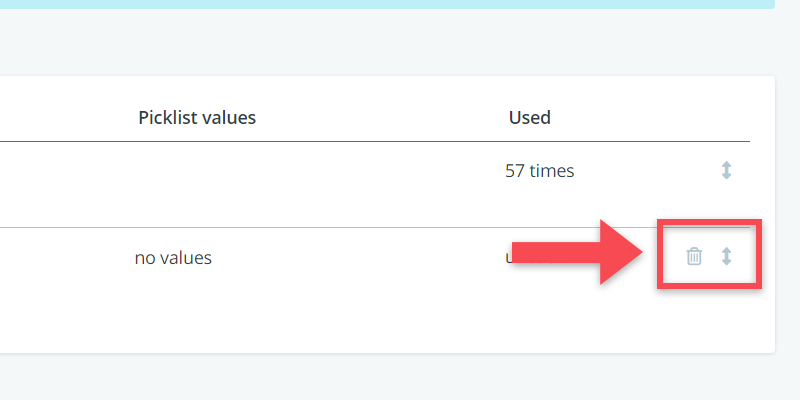
Define verification phases
In this part of the settings menu you can define and manage the verification phases that indicate when a verification has to take place.
To add a phase, do the following:
1. Go to the settings for phases: Navigation menu > Settings > Verification > Verification phases.

2. Click on Add phase to add a phase.
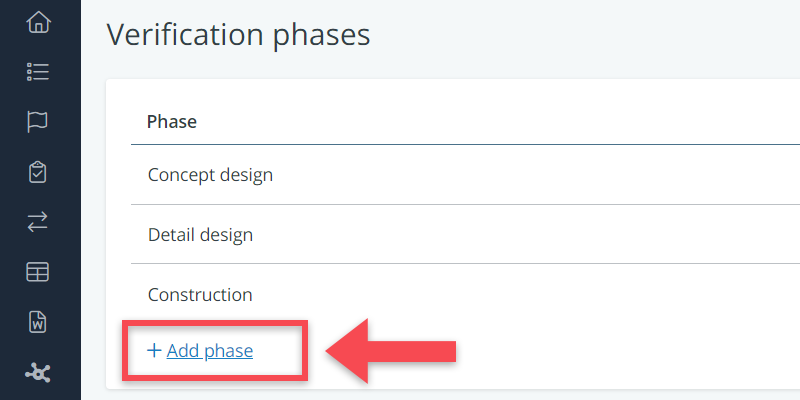
3. Give your phase a name and also take a look at the abbreviation (the abbreviation is being used in the verification columns on the detail views of objects).

4. Note the various action buttons behind the phases:
- By clicking on the , you can clone an entire phase.
- By clicking on the , you can delete a phase.
- By clicking on the , you move a phase up or down in the sequence.
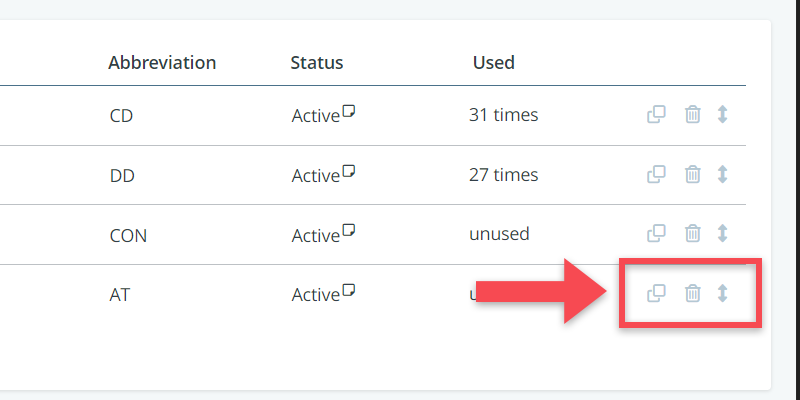
(De)activate verification phases
In the verification phase settings, you can also activate and deactivate verification phases. When a phase is inactive, this means that the verification data for that particular phase cannot be edited. For example, you can deactivate a phase once the verification process for that phase has finished or you can deactivate a phase if you do not want anyone verifying it for now.
You can activate or deactivate a phase via the column Status.
